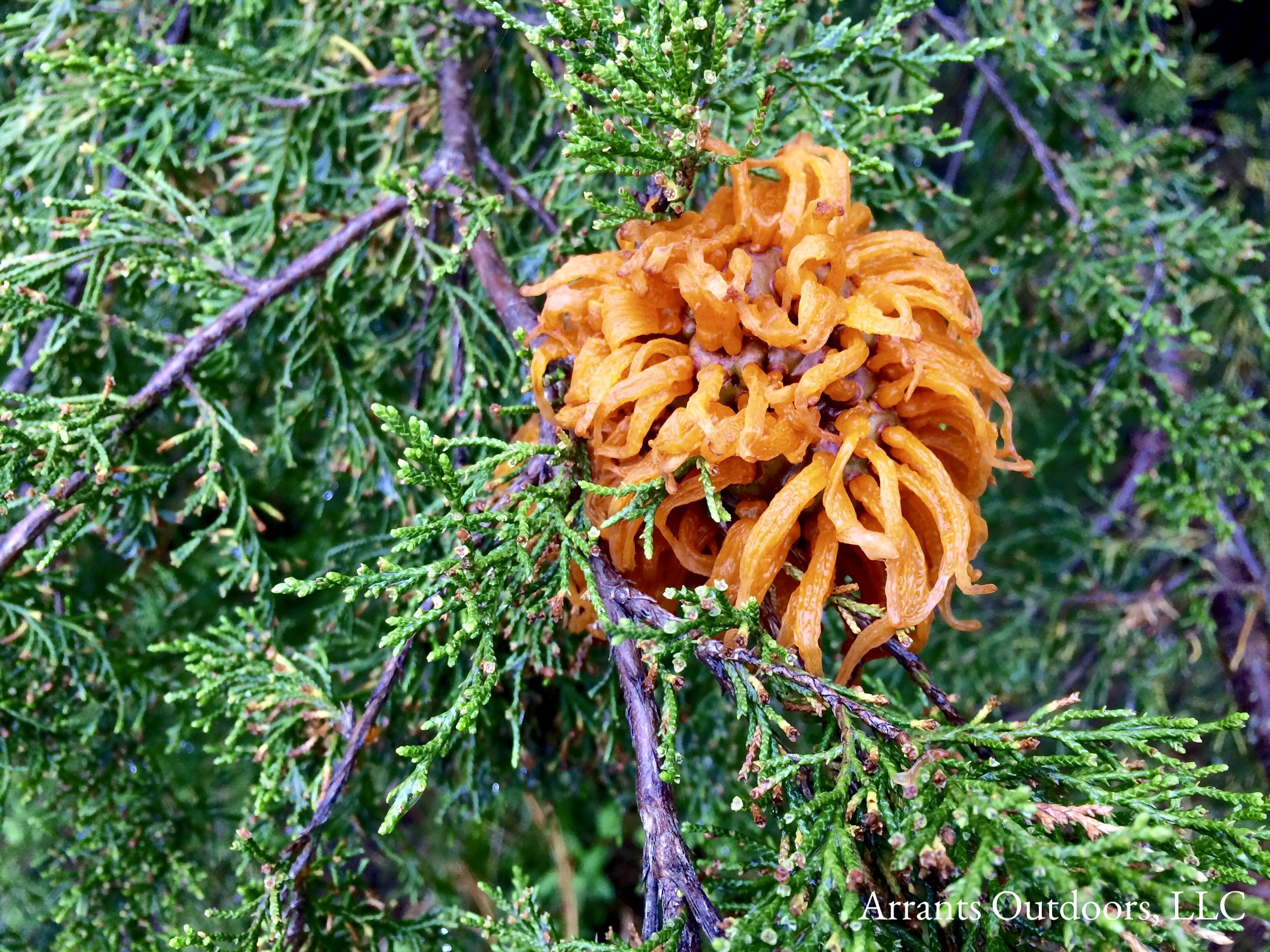Our first clues will be time and place... These items were found in the upstate of South Carolina in the middle of an incredibly hot and humid summer.
The "blobs" are still intact, more or less. So, that lets us know they haven't been weathered or eroded very much. Let's take that into account, knowing the heat, humidity and winds haven't disbursed the objects... so, they're likely just a couple or so days old.
One of the blobs appears to be on some sort of railing. Hmmm... Looking at the railing, we can see there is definitely some water in the background. Where am I apt to find railing like that with that kind of water behind it? The railing looks a great deal like metal hand railing. The same handrails that one might find in parks and public areas along the edges of rivers and ponds. Our next clue has helped narrow our location to somewhere beside, or on, water. The other blob, found only a few feet away from the first one, is sitting on concrete. So, the objects were very close in proximity.
Can we make any sense of the shape of the overall object itself or, better yet, what is in the blob? They're sort of roundish, with the one on the concrete looking a little more oval. Well, take a close look and we can start to notice short, sharp objects and flat, thin objects within each blob. What in or around a pond could give us any clues as to what those shapes are? What do we know is in a pond? Hmmm... those short, sharp objects sure look a lot like little fish bones and those flat, thin objects resemble fish scales to me. What do you think? Nothing about the bones resembles amphibian and, while the bones could be reptile, the scales are those found on fish and not snakes. So, I'm thinking the blobs are completely made up of fish parts. what do you think?
The coloration of the blob, itself, as well as the bones and scales is bleached. While it is very true the sun can bleach bones and scales, but doing so in just a couple days is far from probable. What other natural process can bleach out organic items, such as bones and scales. The chemical processes involved in digestion certainly can... so, why don't we pursue this avenue?
So far, we have puzzle pieces of time (a couple days), location (a pond), probable items (fish bones and scales) inside recognizable shapes (round and oval), with colors (bleached white and clear) that are likely due to chemicals (digestive fluids). These pieces, when placed together, show fish that were digested and bones and scales that were then left behind. Hmmm...
What eats fish at a pond? Well, the picture can get a little mirky here; but, let's work through this part of the puzzle. We've gotten this far and, I think, once we get past this point, we'll be home free in finding out EXACTLY what we're looking at!
River Otters are often found in ponds and they absolutely eat fish. But, any evidence of scales and bones would be in scat... and there is no foul smelling, dark colored feces associated with these objects. Also, why and how would an otter defecate on safety railing? So, let's mark River Otter off of our suspect list. Furthermore, there is no "whitewashing" that occurs with feces of most species. Maybe it isn't scat?
Great Blue Herons and Green Herons are seen regularly at ponds. Could it be one of them? Do they ever perch on railing? They sure do. Let's look at their diets and see if we can narrow down our list of suspects. Do they eat fish? You better believe it! Is that the only thing they eat? Well, not at all. They both eat frogs, snakes and even mice and rats. We've already established the bones are all fish and the scales are not reptile. So, if one of these species left behind these objects, they have been eating only fish. Is it likely that two species of birds that eat a varied diet have decided to just eat fish? Probably not... Who does that leave? Well, there is another bird we haven't thought of just yet...
Belted Kingfishers eat a diet extremely high in fish. While they may occasionally take small frogs and invertebrates, they are masters of hovering over water and diving head first to catch fish. OK... we have a high probability in diet. Would they perch on the railing? Yes, they sure would. But, what about a Belted Kingfisher would leave this object behind? In talking about the River Otter, we decided it wasn't scat. What does that even leave us?
Well, like Hawks and Owls, birds that eat prey items with indigestible body parts must flush those items by regurgitating the material in the form of a "pellet". Also, like Hawks and Owls, the pellet will be a compact object with the indigestible material (whether it's fur, bones, fish scales or even insect exoskeletons). Belted Kingfishers are no exception.
After eating a couple of fish, they will digest the soft tissue of the fish, leaving just bones and scales. Attempting to pass that material all the way through their digestive tracts would be pointless (as no nutrient value can be obtained) and slightly dangerous (those bones can lodge into any number of places on the way out). But, by keeping them in the early stages of digestion, they are able to effectively compress the bones and scales into a pellet and regurgitate the pellet with little danger.
Would you look at what we just did? By taking the appearance, location and context of the mystery items in the photos, we just solved a natural history mystery, And, we proved that we are all naturalists!
Excellent work, my fellow naturalists!
(A Quinn Martin Production)



